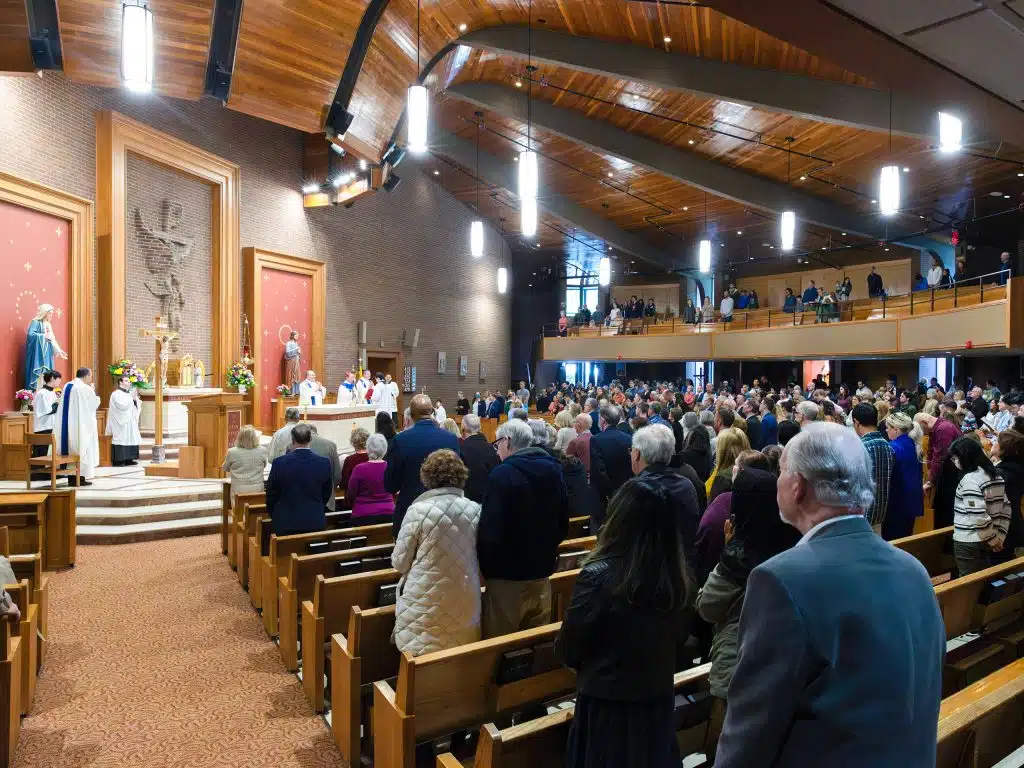Christmas shopping has begun officially. Many people ask, “What do you want for Christmas?” Very often, I don’t have a proper response because I don’t know. Do I want some beauty product that promises everlasting good looks that will lead others to admire me and give me wealth and happiness? Do I want a drink that will instantaneously melt all the excess pounds into a puddle, leaving me with a body like top model Giselle Bundchen by Christmas? Or do I want clothing to adorn my body, hoping to have the elegance of Princess Catherine, duchess of Cambridge? Although I have tried many of these products and purchased tons of clothing, I am embarrassed to say I wound up more depressed than when I first began. For a fleeting moment, I was happy, but shortly after, I realized it was not what I wanted. Which leads me back to the original question — what do you truly want? What will satisfy this deep, unquenchable hunger? Why do I want more and more things that ultimately do not make me happy or spark joy?
Marie Kondo has made a fortune by helping people get rid of things they have kept for various reasons, like sentimentality or a need to have more. Whatever the reason may be, her goal is to help declutter. Is it possible to declutter desires? If it is possible to declutter desires, will there be a void in my life? So many questions, yet there is so little time to think amidst the shopping, sports, parties and other preoccupations.
Where to begin? Advent is a great place to start. The church stops and cries out, “Prepare the way of the Lord.” Sometimes it helps to look at the examples of saints who had their desires fulfilled in unconventional ways. Mary was watching and waiting for the Lord. Little did she know that the Lord would come during her lifetime. Literally to her. Scripture often spoke of Mary pondering things in her heart. Did she consider ways to tell Joseph that she was pregnant? Joseph must have dreamt of a different life with Mary before he discovered she was pregnant. He must have had a million thoughts racing through his mind trying to figure out what to do after he found out she was going to have someone else’s baby. God came to him in a dream to tell him to take Mary as his wife. Joseph was also watching and waiting for the coming of the Lord. Did he expect the Lord would come to his family, under these circumstances? Mary and Joseph had to manage their expectations and desires after the angel Gabriel’s visit. How easy it is to overlook the reality they experienced by saying, “They are saints, and parents of Jesus. Mary and Joseph just happily figured it out or offered it up.”
The journey to Bethlehem consists of many instances of waiting, listening, and adjusting and acting as God revealed his plan. This Advent travel with Mary and Joseph in the Gospel of Luke. Let the pages of Scripture come alive. Engage with the passage as if you were in the room with Mary listening to the angel Gabriel. Mary, what did you see, what did you experience? Struggle with Joseph as he decides what to do with Mary. Travel with them as they knock, ask and plead for a small space to stay, just enough room for a child to be born. Prepare the stable with them as they await his birth. Mary and Joseph may have had other desires before the Annunciation, but as their journey continued, circumstances led to a singular desire — a place for Christ to be born. Maybe the way to declutter desires is to ask the question, “Does this desire create a place for the Christ child to dwell in my heart?”
Piñon is the director of faith formation and evangelization programs for diocesan Office of Faith Formation.


